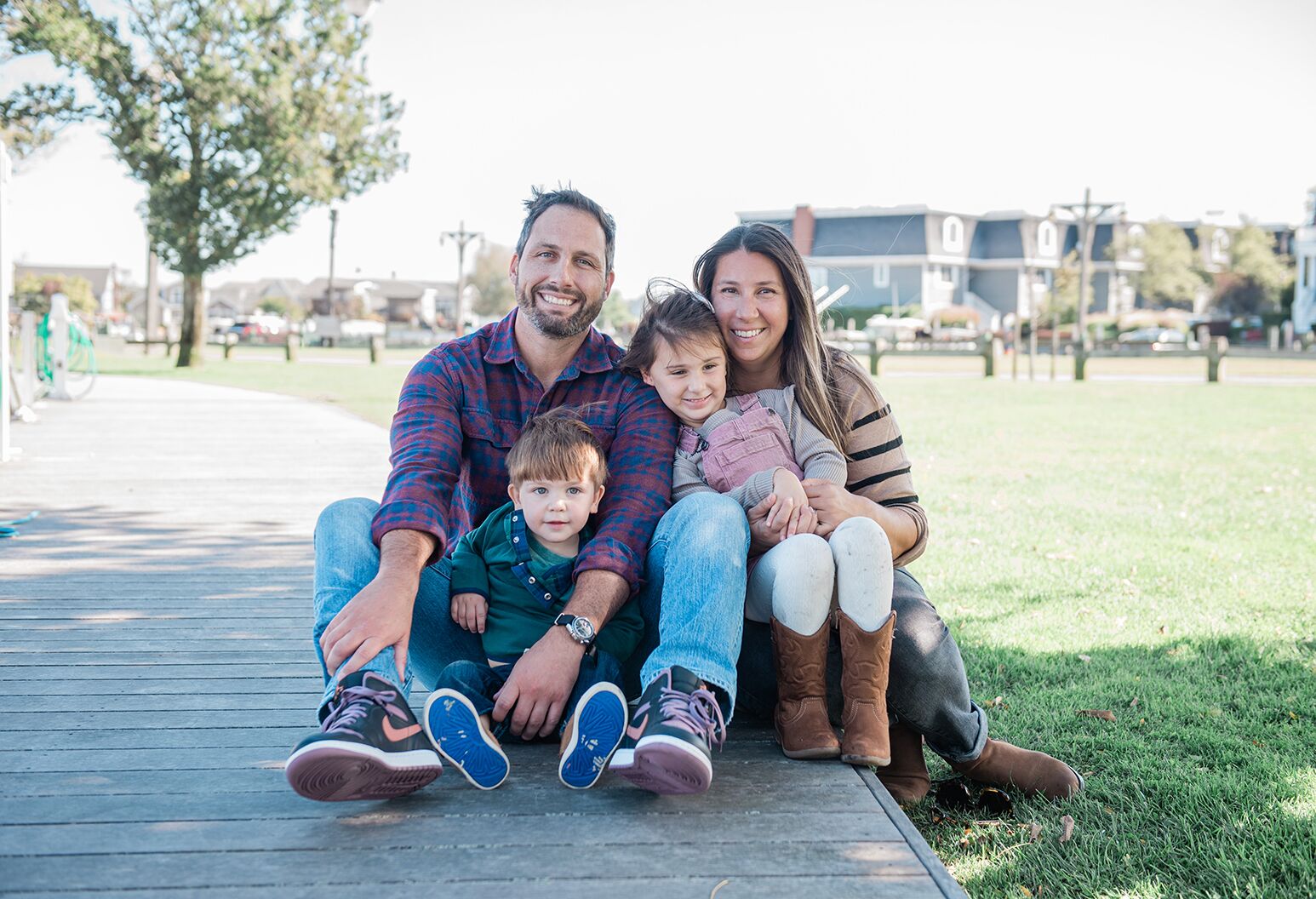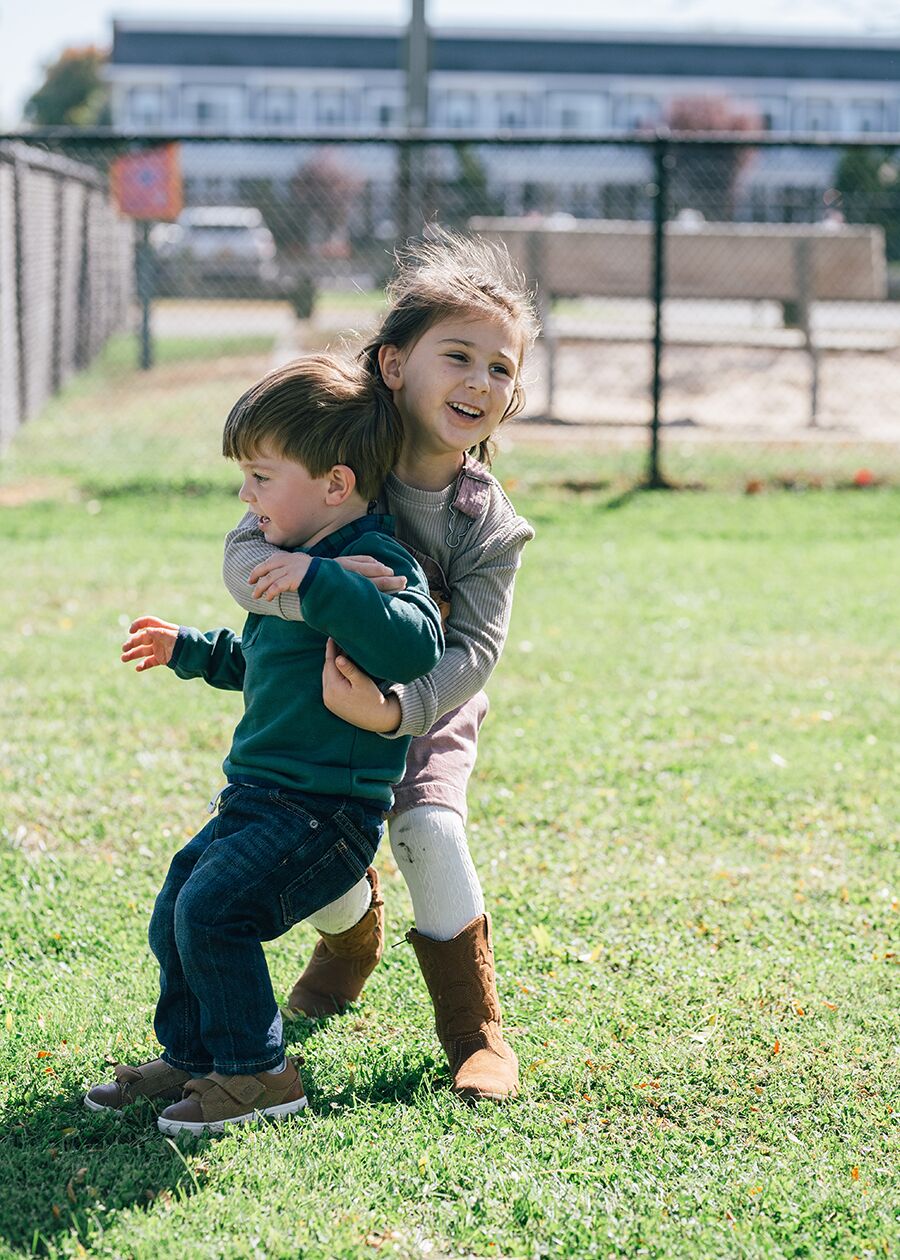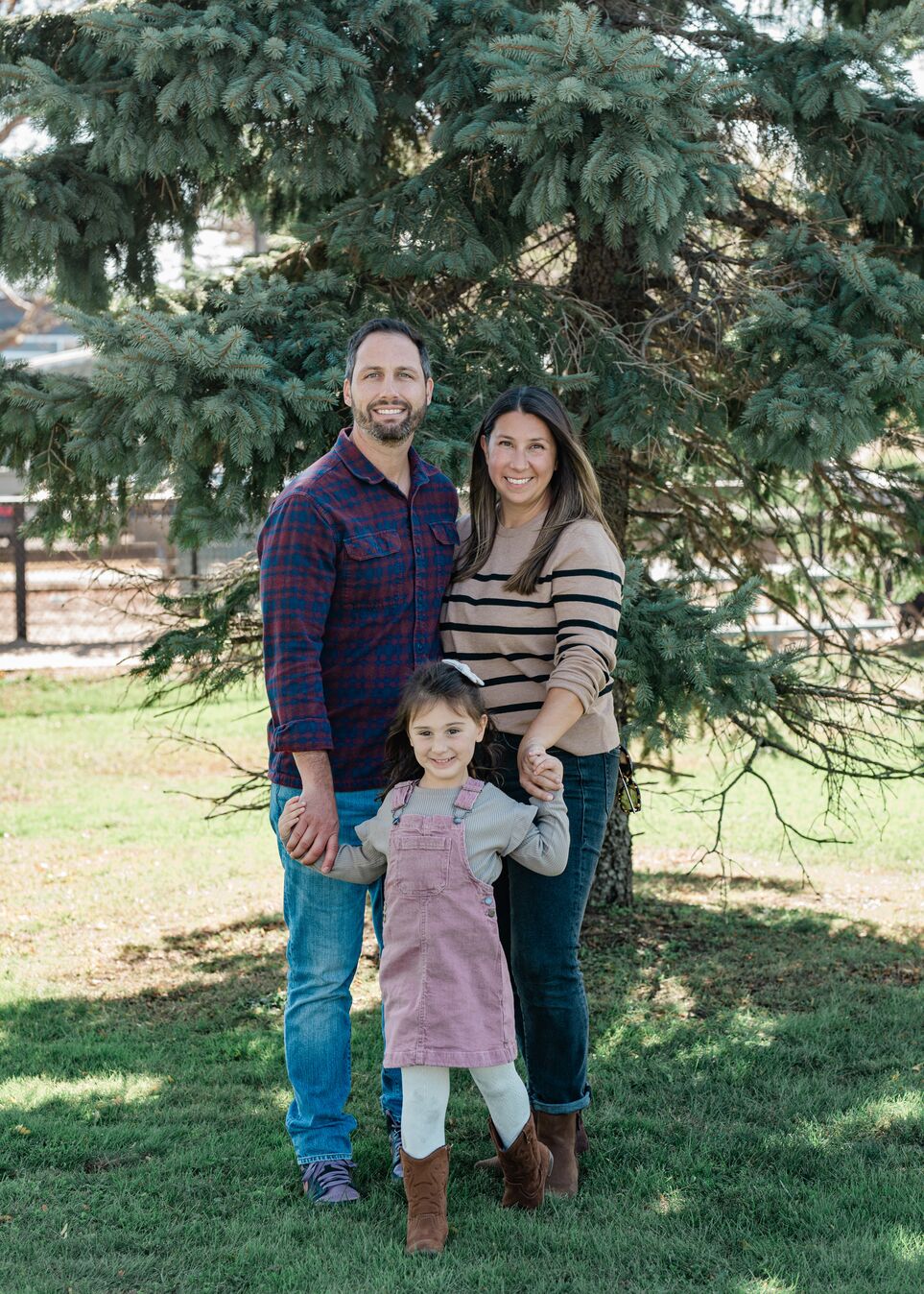269-01 76th Ave
Queens, NY 11040
Our representatives are available to schedule your appointment Monday through Friday from 9am to 5pm.
For a Northwell ambulance, call (833) 259-2367.

Kacey Carpenter was miserable. She had severe abdominal pain, and her stools were filled with blood. Her parents, Keith and Nikki, had driven almost an hour to Northwell’s Cohen Children’s Medical Center because doctors there could see Kacey right away; it would have been at least a week before the hospital closest to their home further out on Long Island could schedule a colonoscopy for the preschooler. Keith and Nikki suspected their daughter’s symptoms were caused by C. difficile, a bacterial infection Kacey had struggled with two years earlier.
Extensive testing at Cohen Children’s, including a colonoscopy, an endoscopy, blood panels, an MRI and an ultrasound, revealed that Kacey didn’t have C. difficile. But she did have anemia — and her colon showed signs of chronic inflammation. In January 2024, at just four years of age, Kacey was diagnosed with inflammatory bowel disease (IBD).
When you think of the kind of tummy troubles that typically strike children under 10, inflammatory bowel disease doesn’t leap to mind. But approximately 80,000 children in the United States have IBD, an umbrella term for two chronic immune-related disorders of the digestive system, Crohn’s disease and ulcerative colitis. Five to 15% of children with IBD develop it before age six, putting them in a subset of patients with very early onset inflammatory bowel disease (VEO-IBD).
IBD can be a devastating illness, and Kacey’s diagnosis terrified her parents, who worried that their child might live the rest of her life struggling with pain — or be left with an ostomy bag, a pouch that collects stool outside the body when it can’t pass through the intestines.
But with the incidence of VEO-IBD rising, Cohen Children’s is developing more ways to help. The hospital has created a special team focused on the very youngest of patients, and doctors are utilizing more effective and less debilitating treatments. Kacey’s team knew that standard treatments might not work for her because of her age, but they were determined to find a way to quiet her disease and prevent it from affecting her overall health. Their aim: to allow her to live the life of a normal child.
Finding a recovery path for Kacey was a journey, says gastroenterologist Benjamin Sahn, MD, co-director of the Pediatric Inflammatory Bowel Disease Center at Cohen Children’s, who worked with pediatric gastroenterology fellow Alison Laxer, MD, on the case. “Kids with VEO-IBD have unique needs,” he says. “If we diagnose a 14- or 15-year-old with colitis, we can usually offer a reasonable assessment of how their disease might unfold. But with really young kids, we can’t predict as easily how their disease will evolve.”
What’s more, children with VEO-IBD tend to have disease that is more aggressive and harder to control; they require a different approach to treatment, says Julie Gallagher, MD, a Cohen Children’s gastroenterologist who recently completed a year-long fellowship studying VEO-IBD at the Children’s Hospital of Philadelphia (CHOP). “VEO-IBD kids aren’t just little IBD patients,” she says. “They have this additional layer of complexity that requires more in-depth understanding of their specific immune systems and their specific genetic makeup. Only when you understand all those pieces are you able to make the best choice for treatment.”
Dr. Gallagher is building a multidisciplinary team within Cohen Children’s specifically for VEO-IBD patients, which will include specialists in immunology and genetics, as well as the gastroenterologists who have long focused on the problem.
“Having gastroenterologists, geneticists and immunologists all working together really revolutionizes how we can take care of children with VEO-IBD,” says Dr. Sahn. “It allows us to pull together all the advances that have been made in recent years.”
All those capabilities proved crucial for Kacey. Many children with VEO-IBD are in and out of the hospital. The disease can make them so sick that they become dehydrated, malnourished and anemic. Because of their chronic inflammation, they are at risk for other complications, such as blood clots or needing intestinal surgeries. So, during her first stay at Cohen Children’s, Kacey was treated with steroids to quiet the inflammation — they are the conventional first course of treatment.
But her symptoms continued.
Next, the team tried a medication called infliximab, another remedy known to reduce intestinal inflammation. Infliximab is what’s known as a biologic, a class of drugs that come from living cells like blood or proteins. In many cases, biologics are more effective against IBD than traditional pharmaceuticals.
Infliximab seemed to help Kacey initially — she improved enough that her parents took her home. But steroids and biologics both suppress the immune system, and 10 days later, Kacey was back in the hospital with another infection.
“After that,” Nikki says, “we didn’t go home for two months.”
Nikki took temporary leave from her job so she and her husband could balance time at the hospital with caring for Kacey’s one-year-old brother. Both sets of grandparents and other family members pitched in.
Everyone at the hospital tried to keep Kacey’s spirits up, too. “They went out of their way for Kacey. They created scavenger hunts and got her access to playrooms. All those little things made such a difference,” says Nikki. But Kacey’s condition kept worsening. Even after a cocktail of medications, her stomach continued to hurt, and she needed the bathroom 10 to 15 times each day. She lost so much blood that the medical team ordered blood transfusions. She dropped so much weight that she needed intravenous nutrition.
Her parents tried enticing her with her favorite foods, but when she started to connect eating with her pain, she began resisting food. “She had no appetite and no energy,” Nikki says. “It was heartbreaking to see her so miserable.”
Treatment for children, teens and even adults with IBD is always a balancing act: Quieting the disease is essential, but effective treatments can carry significant side effects. A possible cure for some with IBD is total colectomy — a surgical removal of the entire colon — but that leaves patients at least temporarily having to void their stool into an external ostomy bag that is attached to the intestine. What’s more, children with VEO-IBD who undergo this surgery have higher risks for complications — and the surgery isn’t always curative, Dr. Sahn says. He and his team wanted to avoid that approach if possible.
We know that 10% of kids with ulcerative colitis will have surgery to remove their colon in their lifetime, and the number is higher for kids like Kacey, who develop the problem so young,” Dr. Sahn says. “Sometimes surgery is the best option, but Kacey was so young. We knew we had to do something different.”





That “something different” was a drug in the category of JAK inhibitors, which reduce inflammation and are often used for psoriatic arthritis and other dermatological and joint problems. But the first JAK inhibitor Dr. Sahn considered was available only in a large pill, which tiny Kacey would be unable to swallow — and because it was an extended-release drug, crushing it would render it ineffective. Fortunately, Dr. Sahn knew that research had shown that another JAK inhibitor, called ruxolitinib, typically used with cancer patients having bone marrow transplants, was effective off-label in treating IBD symptoms in children. Ruxolitinib could be crushed and added to liquids.
Kacey’s parents were hopeful but anxious. “If this didn’t work, we knew we had to get on the surgery schedule,” Keith says. Over the next week, Dr. Sahn tweaked the dose, increasing it once and then again. And suddenly everything fell into place. Kacey’s energy picked up, and her parents noticed that she was acting more social, more like the little girl they had always known. Most importantly, her normal bowel function returned. Kacey was in remission.
But the story wasn’t over. Because every treatment tried so far had “failed” — a standard condition of insurance plans before they’ll cover something new — Kacey’s insurance covered ruxolitinib while she was in the hospital. But once she was well enough to go home, the plan would not approve the drug’s off-label use. For her medical team, it was just one more challenge to meet.
“Dr. Sahn and his team would not give up,” Keith says. “And by some miracle, they got insurance to cover it.
“I don’t think there are many other places where Kacey would have had the outcome she did,” he adds. “With Dr. Sahn and Dr. Laxer, it was always, ‘Let’s find another solution.’”
Today, Kacey is back to the little girl she was before the onset of IBD, playing soccer and swimming like any other four-year-old. “She’s running around and acting like herself again,” Nikki says.
“The fact that she started pre-K without an ostomy bag or surgery — it’s such a testament to the team at Cohen Children’s Medical Center. We are so grateful.”
“So much of treating VEO-IBD is thinking about the patient as a whole and about what’s going on with their immune system,” says Dr. Gallagher. That’s why the multidisciplinary team created within Cohen Children’s Pediatric Inflammatory Bowel Disease Center specifically to treat kids with VEO-IBD will harness the talents of immunology and genetics specialists in addition to gastroenterologists. “The more data we have, the better the team can understand what’s going on in a patient’s body,” she says.
The team is also exploring a new, noninvasive approach from a revolutionary field called bioelectronic medicine — using vagus nerve stimulation (VNS) to turn down the inflammatory response that causes such problems. The vagus nerve runs from the brain down into the chest and abdomen and is the major communication highway between the brain and internal organs.
“When there’s inflammation in the body somewhere, such as the intestine in the case of IBD, the vagus nerve detects it and sends signals to alert the brain,” says Dr. Sahn. “Then the brain sends signals of its own to turn down the inflammation.”
In a recent study, Dr. Sahn’s group found that applying electric stimulation to the vagus nerve with a hand-held device helped lower inflammation and symptoms in a group of children with ulcerative colitis and Crohn’s disease. Other trials are ongoing. “It’s a very exciting moment,” says Dr. Sahn. “I’m very hopeful that this will become another tool for treating IBD, including children with VEO-IBD.
269-01 76th Ave
Queens, NY 11040
Our representatives are available to schedule your appointment Monday through Friday from 9am to 5pm.
For a Northwell ambulance, call (833) 259-2367.